Welcome to our comprehensive guide to France, a country famous for its remarkable history, beautiful landscapes and unparalleled culture. From majestic mountain peaks to extensive coastlines, France's diverse thirteen regions offer many unforgettable experiences.
Explore its unique geography, climate, demographics, and the governmental structures that shape the nation. Discover France's economy, advanced infrastructure, agricultural heartland, and thriving tourism industry. Celebrate the festivals, art and architecture, appreciation of the French language, and much more. Recalling the history of the Kings who shaped the nation and the geography learned in school all these years ago has been challenging but enriching.
Sit comfortably and enjoy the read. We hope you find it interesting, educational, and inspiring.
Table of Contents
- Growing Up in France
- History of France
- Geography and Environment
- French Demographics
- The Government and La République
- French Economy
- The French Healthcare System
- Education and Work-Life Balance
- Cuisine and Gastronomy
- Celebrating Art and Culture
- Festivals and Events
- Sports in France
- Art and Architecture
- French Facts, Stats and Infographics
- Welcome to France!
Growing Up in France
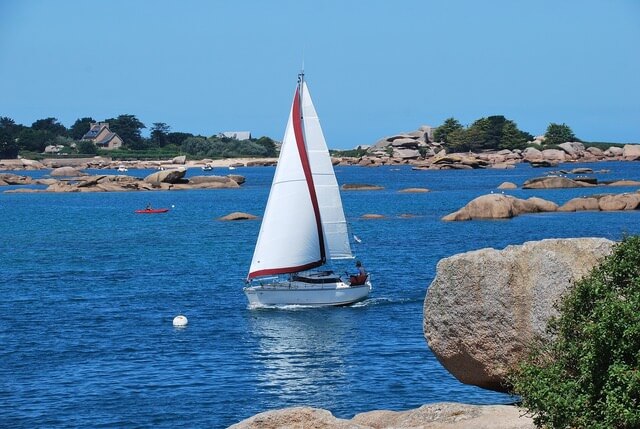
My journey through France has been filled with memorable experiences. From the challenges of learning the language, adapting to the French education system, and preparing for the Bac to the thrill of travelling across the country, France has always been a place of discovery and adventure.
I remember the exhilaration of horse riding in Charente and the strange taste of lobster in Brittany. The Tour de France up the Col du Tourmalet in the Pyrénées, kayaking in the Tarn, and hitchhiking thousands of kilometres across the country are just a few experiences that have shaped my love for France, and my life.
Our Complete Guide to France
Our guide offers a comprehensive yet concise overview of everything you need to know about France. So, let’s explore what makes this country such a special place to visit, work, study, live and retire.
History of France
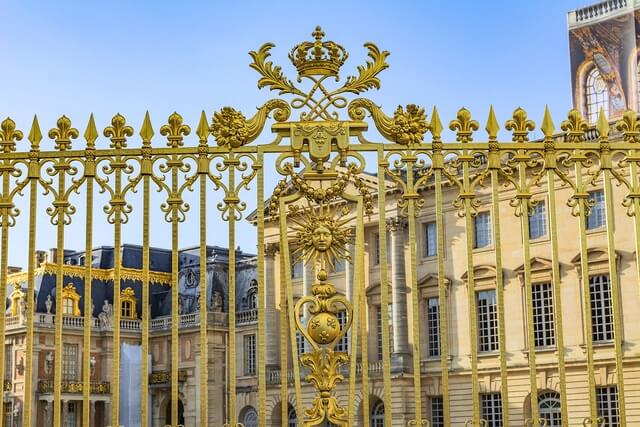
From the ancient Gauls and the Roman Empire to the Middle Ages and the Renaissance, France has played an instrumental role in shaping European history. The country has seen the rise and fall of many powerful dynasties, including the Capetians, Valois, and Bourbons, each leaving their mark on the nation's cultural heritage.
Kings That Shaped France
Key historical figures have shaped France's narrative. Clovis became the first king of the Francs in 481, uniting various tribes and laying the foundation for the future French monarchy. François I, known for his patronage of the arts, love of the Loire Valley, and rivalry with Emperor Charles V, became king in 1515. He brought the Renaissance to France.
Louis XIV, also known as Le Roi Soleil, the Sun King, is known for his long reign and the construction of the Palace of Versailles, symbolising French absolutism and grandeur at the time. Perhaps the most famous French leader of all, Napoléon Bonaparte, transformed France and Europe through his ambitious military conquests and innovative legal reforms.
The Birth of the Republic
In the late 18th century, the French Revolution was a turning point in the country's history, leading to the establishment of the French Republic and the spread of Enlightenment ideas. Throughout the 19th and 20th centuries, France experienced significant political and social changes, including the Napoleonic era, the Franco-Prussian War, and two World Wars. Today, France stands as a beacon of democracy, culture and innovation, drawing millions of visitors from all around the world.
Geography and Environment
France is the largest country in the European Union, covering approximately 640,679 square kilometres. Its coastlines along the English Channel, the Atlantic Ocean, and the Mediterranean Sea stretch for about 5,500 kilometres and share borders with Belgium, Luxembourg, Germany, Switzerland, Italy and Spain.
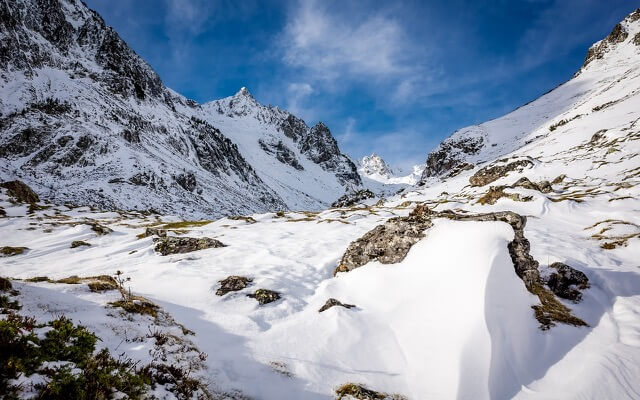
Mountains in the French Alps
High Peaks and Long Rivers
The country's diverse landscape includes the French Alps, home to Mont Blanc, the highest peak in the Alps, which rises to an impressive 4,807 meters (15,771 feet). The Massif Central features volcanic plateaux, while the picturesque Pyrénées and the gentle plains of the Paris Basin enhance the country's beauty. The rolling hills of the Loire Valley are traversed by the Loire River, the longest river in France at 1,006 kilometres (625 miles).
France's Biodiversity
France's river systems, including the Seine, Loire, Rhône, and Garonne, span over 428,900 kilometres and have played a crucial role in transportation, shaping the country’s history, contributing to its biodiversity, and offering numerous opportunities for exploration. This natural abundance is further supported by approximately 28 million hectares of agricultural land, sustaining farming.
The Regions of France
France is divided into several distinct regions, each with its unique character and attractions. The Île-de-France region, home to Paris, is the country's political and cultural heart. A couple of hours' drive away, Normandy, with its historic D-Day beaches and picturesque countryside, offers a blend of history and natural beauty. Further west, Brittany known for its rugged coastline and Celtic heritage, provides a unique cultural experience. The Loire Valley, famous for its châteaux and vineyards, is a must-visit for history and wine enthusiasts.

Medieval castle of Carcassonne
On the east side of the country, the Alps, including the Mont Blanc region, offer breathtaking landscapes and world-class skiing. With its lavender fields and Mediterranean climate, Provence is a favourite for those seeking sun and relaxation. The French Riviera, or Côte d'Azur, is famous for its stunning beaches and luxury resorts, including Cannes and Saint-Tropez.
In the southwest, the Dordogne situated within the Nouvelle-Aquitaine region, is celebrated for its landscapes, medieval castles, and prehistoric caves. Carcassonne, a fortified medieval town in the Occitanie region, is famous for its beautifully preserved architecture and is listed as a UNESCO World Heritage Site.
The French Climate
France enjoys a diverse climate ranging from temperate oceanic in the north and west to Mediterranean in the south. The Atlantic coast and the northern regions experience mild winters and cool summers, with frequent yearly rainfall. Central France has a more continental climate, with hotter summers and colder winters.
The Mediterranean coast benefits from warm, dry summers and mild, wet winters, making it a popular destination for sun-seekers. The Alps and other mountainous regions experience a typical alpine climate, with cold, snowy winters and cool summers, ideal for winter sports. This variety in climate contributes to France's appeal as a year-round travel destination.
The Weather in France
Here is the current weather for popular locations, including Paris, Nice, Montpellier and Bordeaux. Meteo Concept kindly provides this information, and our members have access to these forecasts in their member area (it's free), along with their notes and saved properties. For more details about the weather in France, including forecasts, please visit their website, especially if you are travelling for leisure, business, or house hunting so that you can prepare accordingly.
Natural Wonders
France is home to many natural wonders, highlighting its picturesque landscapes and ecological richness. Over 25 per cent of the country's territory is forested, while another 50 per cent consists of countryside or farmland.
The Highest Peak in Europe
The French Alps in the Auvergne Rhone-Alpes region, with their towering peaks and pristine valleys, are a paradise for nature enthusiasts and adventurers. Mont Blanc, the highest mountain peak in Western Europe, offers breathtaking views, challenging hikes, glaciers, and alpine lakes brimming with diverse wildlife.
The Grand Canyon of Europe
In southern France, the Gorges du Verdon, often called the "Grand Canyon of Europe," features striking limestone cliffs and turquoise rivers, making it ideal for hiking, kayaking, and rock climbing. The Camargue, a unique wetland in the Rhône delta, is famous for its salt marshes and diverse wildlife, including pink flamingos and white Camargue horses.
Volcanic Heritage in the Centre
The Auvergne region showcases volcanic landscapes, with the Chaîne des Puys and Puy de Dôme offering panoramic views and excellent hiking opportunities. On the Mediterranean coast, Calanques National Park near Marseille boasts dramatic cliffs and hidden coves perfect for exploration and swimming.
Protected Sites and Species
In northern France, Normandy and Brittany feature rugged coastlines, sandy beaches, and charming fishing villages, with Mont-Saint-Michel standing out as a UNESCO World Heritage Site. These natural treasures are home to over 90,000 known species, including 5,000 endemic species, making France an attractive destination for nature lovers and adventure seekers. Ongoing conservation efforts ensure the preservation of these incredibly beautiful sites for future generations.
French Demographics

French flag - blue, white and red
France is the second-most populous country in the European Union, with approximately 68 million people. Its diverse demographic profile reflects the country's history and various cultural influences. While most of the population is of French ethnicity, significant communities of immigrants and their descendants are from regions such as North Africa, Sub-Saharan Africa, and Southeast Asia.
Urban Concentration
The population is not evenly distributed; urban areas like Paris, Lyon, and Marseille have the highest concentrations of residents. The Île-de-France region, including Paris, is the most densely populated, accounting for about 18% of the population. In contrast, rural areas, particularly central and southern France, have much lower population densities. Although France has a relatively low fertility rate, its population continues to grow due to immigration and increased life expectancy. The ageing population presents challenges and opportunities, especially in healthcare and social services.
The French Language
The French language is a Romance language that originated from the Latin spoken during the Roman Empire, which conquered Gaul (now France) in the 1st century BC. Over time, this Latin evolved and was influenced by Celtic and Germanic languages, particularly those of the Franks. This led to the development of Old French by the 9th century.
Latin and Greek Influences
Old French transitioned into Middle French between the 14th and 17th centuries. During this period, French became the official language of the court and administration, which solidified its status among the elite. The Renaissance further enriched the language by introducing influences from Italian and Greek.
Regional Patois
While French is the language of France, the country is home to several ancestral dialects and regional patois. In the north, dialects like Picard, Norman and Walloon have declined over time, while in the south, Occitan dialects such as Provençal and Gascon have seen renewed interest in recent years, including among the younger people.
Supporting Local Languages
Other regional languages include Breton in Brittany, Basque in the Pyrénées-Atlantiques and Alsatian in Alsace in Eastern France. Together with Corsican and Catalan, these languages enrich France's linguistic heritage. Efforts to preserve and promote these languages have increased, focusing on their revival in education and in daily life.
French Overseas Territories (DOM-TOMs)
France's demographic landscape extends far beyond Europe, encompassing its overseas departments and territories, known as the DOM-TOMs (Départements et Territoires d'Outre-Mer). These regions comprise Guadeloupe, Martinique, Réunion, French Guiana, Mayotte, and territories in the Pacific and Indian Oceans. Including the DOM-TOMs adds millions of residents to France's total population, significantly expanding its geopolitical footprint and economic reach, particularly through maritime resources and strategic military locations.
Religion in France
France is a secular republic with a strong tradition of laïcité, or secularism, which separates religion from the state. This principle, established by the 1905 law on the Separation of the Churches and the State, ensures religious freedom and neutrality in public affairs while allowing diverse religious beliefs to coexist.
Catholic Heritage
Historically, Christianity, particularly Roman Catholicism, has been the dominant religion in France, with landmarks such as Notre Dame Cathedral and the Basilica of Saint-Denis highlighting this heritage. However, many people today identify as non-practising or non-religious.
Muslim Heritage
Islam is the second-largest religion in France, primarily due to immigration from North Africa. The Muslim community is diverse and is represented by various mosques and cultural centres throughout the country. Other religious communities include Protestants, Jews, Buddhists, and followers of Eastern religions, all contributing to the increasing religious diversity in France.
Tolerance and Respect
While France promotes tolerance and respect for all faiths, it also faces challenges related to religious integration and balancing religious freedom with secular principles. These issues are addressed through ongoing dialogue and policy initiatives to foster a harmonious society.
The Government and La République
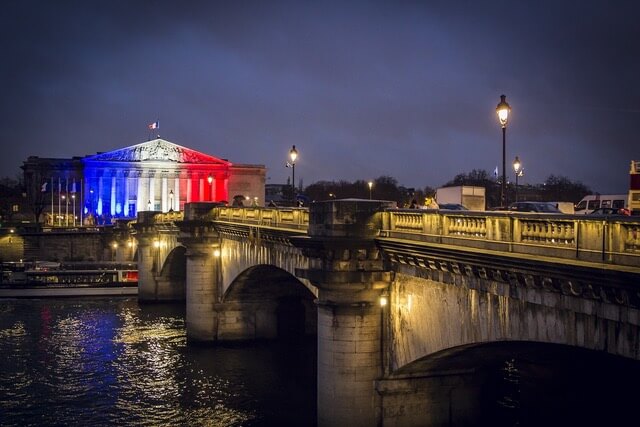
French National Assembly Paris
The Fifth Republic
Established in 1958, the French government operates as a semi-presidential representative democratic republic known as the Fifth Republic. It maintains a balance of power between the executive and legislative branches.
The Role of the French President
The President of the Republic, Emmanuel Macron, was elected by universal suffrage for five years and wields significant powers. He was first elected in 2017 and is currently serving his second term. These powers include appointing the Prime Minister, dissolving the National Assembly, as he did in 2024, and serving as the Commander-in-Chief of the French armed forces.
The Prime Minister and Legislative Structure
The Prime Minister, who is appointed by the French President, leads the government policies and oversees daily operations in collaboration with the Council of Ministers (le Conseil des Ministres). The legislative branch is bicameral, consisting of the National Assembly (577 deputies) and the Senate (348 senators). L'Assemblée Nationale has primary legislative authority, while the Senate serves as a review chamber.
Judicial Independence and Constitutional Oversight
The independent judicial system includes the Constitutional Council, which ensures that laws adhere to the Constitution, and the Council of State, which advises the executive and resolves administrative disputes. This balance of power reflects the principles of liberté, égalité and fraternité integral to the French République.
French Economy
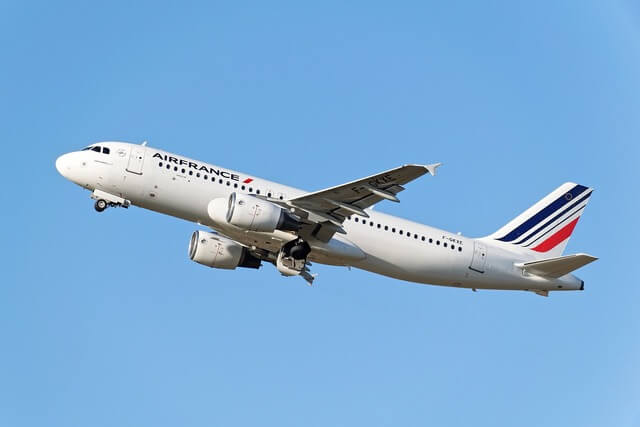
Air France
France boasts one of the world's largest and most diverse economies, ranking seventh globally and second in the European Union, with a GDP of approximately €2.3 trillion in 2022. Robust manufacturing, tourism, agriculture, and services sectors support the country's economic strength. Key industries include aerospace, automotive, and luxury goods, with major companies such as Airbus, Renault and LVMH contributing significantly to the economy.
Key Industries Fuelling Growth
The fashion and luxury goods sector alone is valued at €150 billion, highlighting France's influence on global trends. The aerospace industry also serves as a crucial pillar, generating around €50 billion in revenue in 2022. That same year, France produced approximately 2 million vehicles in the automotive sector.
Key Sectors of the Economy
Tourism is vital to the economy, attracting millions of visitors to renowned destinations like Paris and the French Riviera. France is also a leading producer of wine, wheat, and dairy products. Many workers and professionals are employed in the services sector, especially finance, healthcare and technology. In recent years, France has made significant investments in technology and innovation, establishing itself as a startup hub.
Tech Innovators and AI Pioneers
The country encountered increased venture capital funding, with approximately €5 billion directed towards tech investments in 2022, and has prioritised advancements in artificial intelligence (AI), with companies like Mistral AI leading the charge.
French Infrastructure
France boasts a highly developed infrastructure that bolsters the country's economic growth and enhances the quality of life for its residents. This includes an extensive transportation network and advanced telecommunications systems.

The Millau Bridge - an example of France's excellent road infrastructure
Excellent Road and Rail Network
The country's transportation system features a modern high-speed rail network operated by SNCF. TGV trains connect main cities efficiently across approximately 29,000 kilometres of rail lines. Additionally, the well-maintained road network, comprising 12,000 kilometres of motorways and secondary roads, facilitates smooth travel and is highlighted by impressive structures such as the Millau Bridge, the tallest in the world, designed by French engineer Michel Virlogeux and British architect Norman Foster, soaring 343 meters above the Tarn Valley in the Occitanie region.
Key Airports and Maritime Ports
France also has major international airports, including Paris Charles de Gaulle, Toulouse, Nice, Bordeaux, Bergerac, Montpellier and Carcassonne, and numerous regional airports that improve air connectivity. Its maritime ports, such as Le Havre and Marseille, are critical for commercial shipping and trade.
Energy and Telecommunications
France's telecommunications infrastructure is reliable, offering widespread high-speed internet and mobile technology access. The country's energy mix is diverse, incorporating nuclear power, renewable energy sources, and fossil fuels, with a significant focus on expanding renewable energy options.
Natural Geothermal Resources
Geothermal energy is widely used in France, contributing significantly to the renewable energy mix. The nation's varied geological conditions make it ideal for geothermal technologies. By developing geothermal energy, France continues to commit to reducing greenhouse gas emissions and promoting a greener future.
Water and Sanitation
The country's water and sanitation services are well-established, ensuring a clean water supply and efficient waste management. Continued investments from both the government and private sector aim to enhance the efficiency and sustainability of infrastructure, ensuring that the country remains a leader in global infrastructure development while improving the quality of life for its residents.
Renewal Energy and Development
Renewable energy is also an emerging sector, accounting for roughly 20% of total energy production. France hosts over 17,500 foreign-owned companies, continuing to attract international investment. However, challenges persist, such as high youth unemployment and the pressing need for structural reforms. The government addresses these issues through innovation, education and infrastructure development initiatives.
Agriculture in France
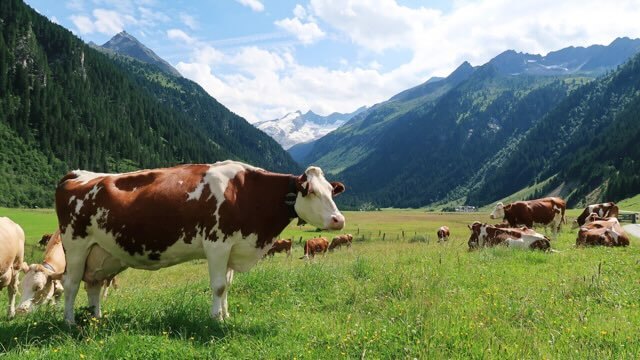
Livestock in France
Agriculture plays a vital role in France's economy and cultural identity, making the country one of the world's leading agricultural producers and exporters. In 2024, the total value of agricultural production reached €89.3 billion.
A Significant Exporting Power
France's diverse climate and geography support various agricultural activities, including crop cultivation and livestock farming. The fertile plains of the Paris Basin (la Beauce) and northern regions are well-suited for growing cereals such as wheat, barley, and maize, staples in the French diet and significant export commodities. Crop production alone contributes €46.5 billion to the economy.
The Finest Wines in the World
France is also renowned for its wine production, with famous regions like Bordeaux, Burgundy and Champagne producing some of the finest wines in the world, approximately 44 million hectolitres in 2022. In addition, fruit orchards, especially in the south, yield abundant harvests of apples, pears, and peaches. The Mediterranean climate in Provence is ideal for cultivating olives and lavender.
Livestock and Dairy Products
Livestock farming is another crucial sector, as France is a major producer of dairy products, beef, and poultry, contributing €33.9 billion from animal production. The country stands out as a leading cheese producer, with an annual output of approximately 1.9 million tons.
Embracing Change to Ensure Quality
Advanced technologies and sustainable practices support France's strong agricultural tradition, ensuring high-quality products that meet global demand. Total farm subsidies amount to €8.6 billion; after accounting for product subsidies of €1.2 billion, the overall subsidy total reaches €9.8 billion.
Cornerstone of the Economy
Despite global headwinds such as climate change and market fluctuations, France's agricultural sector remains a cornerstone of its economy, with these products enjoyed locally and exported worldwide.
French Tourism
France is the number-one tourist destination in the world, attracting more than 100 million visitors each year due to its unique cultural heritage, beautiful landscapes, renowned classic cuisine and wine. Tourism is vital to the country's economy, generating significant revenue and supporting thousands of jobs. With 1.6 billion overnight stays from tourists, it contributes significantly to the country's economic strength.
The Most Visited Museum in the World
The country benefits from well-developed infrastructure, including high-speed trains, extensive road networks, and numerous airports, facilitating easy exploration of its many attractions. Paris, known as the City of Light, is one of the most visited cities globally. It is famous for its many iconic and historic landmarks, such as the Eiffel Tower, which stands at 986 feet tall and attracts 7 million visitors annually, and the Louvre Museum, the most visited museum in the world, welcoming 8.7 million visitors in 2024.
From White Peaks to Golden Beaches
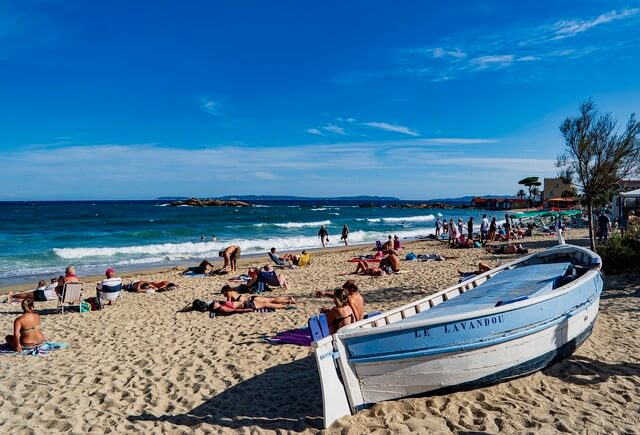
A Beach on the French Riviera - Le Lavandou
The French Riviera is a popular sun-seek destination, featuring glamorous beaches and luxury resorts like Cannes and Saint-Tropez.
Beyond Paris, France offers a diverse array of tourist attractions. The French Riviera is a popular sun-seek destination, featuring glamorous beaches and luxury resorts like Cannes and Saint-Tropez. The French Alps, including the Mont Blanc region, draw skiers and mountaineers from around the globe, boasting 232 ski resorts and over 8,000 kilometres of ski slopes. The Loire Valley, celebrated for its magnificent châteaux and vineyards, is a must-visit for history buffs and wine lovers alike.
Landmarks and UNESCO Sites
Normandy’s historic D-Day beaches and picturesque countryside combine dramatic historical memories in a naturally beautiful coastal setting. Provence, with its colourful lavender fields and Mediterranean climate, is favoured by those seeking relaxation and cultural experiences. France has 45 UNESCO World Heritage Sites, including iconic landmarks like the Eiffel Tower and the Louvre Museum. Additionally, the country offers over 1,200 museums and 180,000 kilometres of marked hiking and walking trails, ensuring a diverse experience for all visitors.
Currency Used in France
The national currency of France is the Euro, which is widely used for all transactions across the country. The Euro is symbolised by € and represented by the three-letter code EUR. It serves as the official currency of the Eurozone, of which France is a member. As a result, the Euro is the primary currency for both locals and visitors.
From Francs to the Euro
Before adopting the Euro in 2002, France used the Franc as its national currency. The Franc, symbolised by ₣ or FRF, was the official currency of France from 1360 until it was replaced by the Euro. The switch was part of a broader economic integration within the European Union, aiming to streamline trade and financial transactions among member states.
Getting your Euros
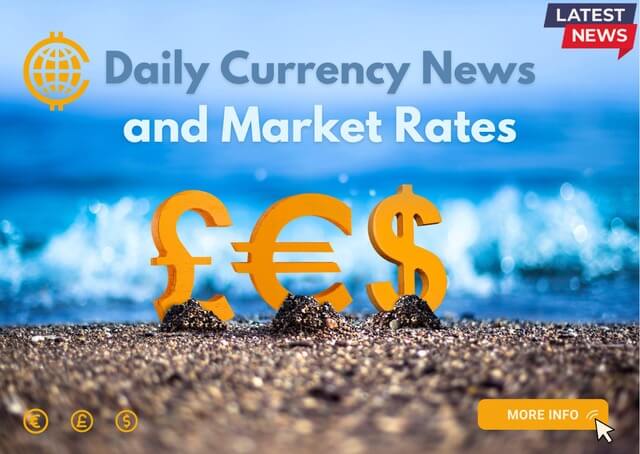
Currency in France
The Euro is the most convenient and widely accepted currency when travelling to France. Whether dining at a café in Paris or shopping at markets in Provence, you will primarily use Euros. Carrying some cash is advisable, as not all establishments may accept credit cards, particularly in smaller towns and rural areas.
You can exchange your home currency for Euros at currency exchange offices or through ATM withdrawals, which often offer competitive exchange rates. Additionally, it's a good idea to let your bank know about travel plans to avoid issues with your cards abroad.
The French Real Estate Market
The real estate market in France is vibrant and diverse, offering a wide range of opportunities for local and international buyers. The average house price is approximately €270,000, and the average rental yield is around 6% (source seloger - Nov. 2024). The residential sector has seen significant activity, with new builds and resale properties attracting considerable interest. The projected transaction value of the residential real estate market is estimated to reach US$340.50 billion by 2025, indicating a strong and growing market.
The Parisian Market
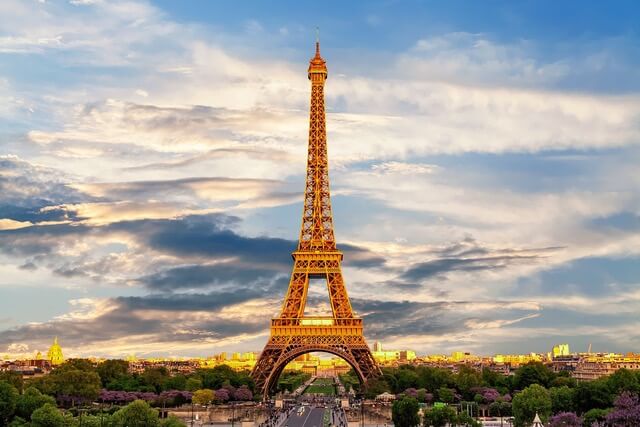
The Eiffel Tower
Paris, the capital city, remains one of the most sought-after locations for real estate investment. Its undeniable charm, cultural attractions and robust economy make it a prime destination for residents and international buyers. High-end neighbourhoods, such as the 6th, 7th, and 8th arrondissements (districts), are particularly popular, with properties commanding premium prices due to their central locations and prestigious addresses.
Sunny On the Côte d'Azur
Beyond Paris, several regions in France are gaining attention for their real estate potential, especially among tourists and expatriates. The French Riviera, or Côte d'Azur, is renowned for its glamorous lifestyle, stunning coastlines, and luxury properties. Cities like Cannes, Nice, and Saint-Tropez feature a mix of high-end villas, modern apartments, and historic homes, attracting buyers looking for primary residences and vacation homes.
Lavender Fields for Ever
Provence, known for its picturesque landscapes, purple lavender fields, warm Mediterranean climate and artistic heritage, is another favoured area for real estate investment. The region boasts charming villages, such as Gordes and Saint-Rémy-de-Provence, which blend rural tranquillity with access to urban amenities. Properties in Provence range from traditional farmhouses (mas) to modern villas, catering to various buyer preferences.
Castles and Caves in the Dordogne
The Dordogne, located in the Nouvelle-Aquitaine region, is celebrated for its beautiful green landscapes, medieval castles, and prehistoric caves. This area is particularly popular among expatriates, especially from the UK, drawn to its rural charm and slower pace of life. Properties in the Dordogne include historic châteaux, traditional stone houses, and modern homes, offering various options for those seeking a piece of the French countryside.
All Year Around Fun in the Alps
The French Alps, known for their breathtaking mountain scenery and world-class ski resorts, attract significant real estate investment. Areas like Chamonix, Courchevel, and Megève offer a mix of luxury chalets, apartments, and investment properties, drawing buyers who appreciate the region's natural beauty and recreational opportunities.
Opportunities for Investors
New-build properties are in high demand, particularly in areas experiencing population growth and urban development. These properties often feature modern amenities, energy-efficient designs, and attractive financing options, making them appealing to first-time buyers and investors.
Older Homes and Property Projects
The resale market is also robust, offering a range of properties to suit different budgets and preferences. From historic homes needing renovation to fully modernised apartments, the resale market provides opportunities for buyers looking to customise their properties or invest in fixer-uppers.
Real Estate Opportunities
The French real estate market presents many opportunities for buyers, with a diverse array of properties and locations. Whether you are searching for a primary residence, a vacation home, or an investment property, France's real estate market has something for everyone.
The French Healthcare System
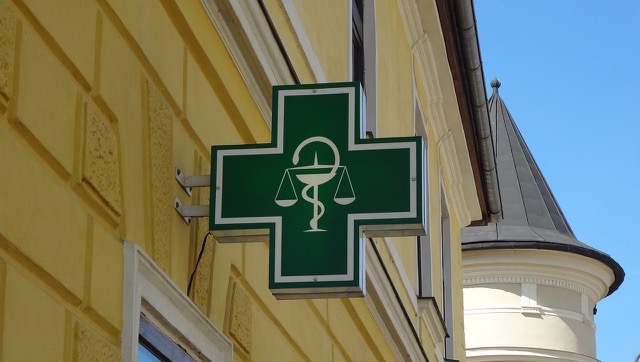
The French Healthcare System
France is renowned for its high-quality healthcare system, which ranks among the best in the world. This model combines public and private sectors, ensuring comprehensive care for all residents. The public system, known as l'Assurance Maladie (CPAM), is funded through social security contributions and provides universal coverage.
A Focus on Preventive Care
The healthcare system strongly emphasises preventive and primary care, with general practitioners as patients' first point of contact. Public hospitals, or Centres Hospitaliers, offer a wide range of services, while private clinics specialise in elective procedures.
Solid Healthcare Infrastructure
France boasts a robust healthcare infrastructure with modern facilities and advanced technology. The country excels in medical research, particularly oncology, cardiology and neurology. Healthcare professionals undergo rigorous training, and patient rights are a top priority.
Reforms Required to Maintain Excellence
Despite its strengths, the system faces ageing infrastructure and workforce shortages. However, reforms are underway to improve access, quality, and sustainability. France's healthcare system continues to be a model of excellence, delivering high-quality care to its residents.
Education and Work-Life Balance
A law enacted in 2000 established the standard working week in France at 35 hours. Actual working hours vary depending on the industry, company policy, and individual contracts. Many employees, particularly in healthcare, technology, and management, often work overtime, which is compensated with additional pay or time off.
Average Salary in France
In 2024, the average gross salary in France is projected to be approximately €39,300 annually or €3,275 monthly. After taxes and social contributions, the net monthly salary will be around €2,500, although this amount can vary by sector and region.
Education and Grandes Ecoles
Education in France is highly valued and well-structured, from early childhood to higher education.
Early Education in France
The journey begins with crèches for young children, followed by primary schools (écoles primaires) for children aged 6 to 11. After primary school, students attend collèges from ages 11 to 15 and then progress to lycées, which cater to students aged 15 to 18 and prepare them for the Baccalauréat. This national test marks the completion of secondary education.
Second and Higher Education
Lycées offer general and vocational tracks, allowing students to specialise according to their interests. Higher education in France features a variety of universities and over 200 prestigious Grandes Écoles, such as École Polytechnique, HEC Paris and Sciences Po, which provide specialised training in fields like engineering and business. These institutions are known for their rigorous admissions processes and high-quality education, attracting around 350,000 international students and enhancing the country’s intellectual and cultural diversity.
International Schools and Academic Excellence
France also hosts international schools that follow global curricula, such as the International Baccalaureate (IB), which promotes multicultural learning. Committed to academic excellence and equal opportunity, the French education system invests in education as a fundamental aspect of society and a pathway to success.
Workers Holidays
French workers are entitled to five weeks of paid holiday every year and eleven public holidays. Vacation entitlement increases with the length of service, reaching a maximum of 30 days. Employers pay regular salaries during vacation, and employees can take their time off at their discretion.
Retirement Age
As of 2023, individuals can begin receiving their state pension at age 62, but they must contribute for a certain number of quarters to receive a full pension, with the requirement varying by birth year.
Cuisine and Gastronomy

Ratatouille - a classic French dish
French cuisine is celebrated for its flavours, culinary techniques and diverse regional specialities. Whether dining in a typical bistrot or enjoying one of the many Michelin-starred restaurants, France offers a gastronomic journey that delights the senses.
Classic dishes like coq au vin, a hearty chicken stew cooked with wine, bacon, and mushrooms, and ratatouille, a tasty vegetable stew from Provence, are just the beginning of France's culinary delights. Bouillabaisse, a traditional Provençal fish stew, is another must-try, featuring a medley of fresh seafood and aromatic herbs.
Regional Specialities
Each region in France boasts its unique culinary traditions. In Brittany, crêpes and savoury galettes are popular, while Alsace is known for its choucroute garnie, a hearty dish of sauerkraut, sausages, and pork. The southwest of France is famous for its foie gras and cassoulet, a slow-cooked casserole of meat and beans.
Bread and Pastries
No discussion of French food would be complete without mentioning bread and pastries. The baguette is a staple, while croissants, pains au chocolat and macarons are beloved treats. Artisanal bakeries across the country offer a tantalising array of freshly baked goods, perfect for a leisurely breakfast or afternoon snack.
Wine and Champagne
Wine is a vital component of French culture, with renowned regions like Bordeaux, Burgundy, and Champagne producing some of the globe's finest vintages. Whether you prefer a full-bodied red, a crisp white, or a chilled rosé, France's wine selections are as diverse as they are delightful.
Where Do You Start with Cheese?
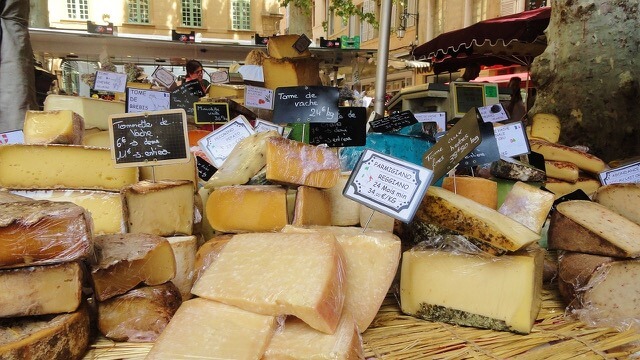
French Cheeses
Shown at a market stall in France
Cheese enthusiasts will encounter a paradise in France, which offers over 1,000 types of cheeses. From the creamy Camembert of Normandy to the pungent Roquefort of the south, each cheese narrates a story of its terroir and the artisans who create it.
Markets and Dining
Exploring France's bustling markets is a sensory experience not to be missed. From the fragrant spices and fresh produce of Paris's Marché d'Aligre to the seafood stalls of Marseille's Vieux-Port, these markets offer a glimpse into the country's culinary heart.
The Art of Dining
Dining in France is an art form. Meals often last several hours and feature multiple courses, and a little etiquette accompanies the experience. From the traditional terraced bistrots of Paris to the rustic auberges of the countryside, each dining experience celebrates flavours, traditions, and the joy of sharing a meal with loved ones.
Culinary Innovation
French cuisine is celebrated globally for its unique flavours and continuous evolution; it is deeply rooted in tradition while also embracing culinary innovation and new techniques. Chefs across the country constantly push the boundaries of taste and technique, creating new and exciting dishes that respect the past while looking towards the future.
Fun Food Facts
France consumes approximately 30,000 tons of snails annually and around 50 million croissants per week, underscoring the lasting appeal of classic French delicacies. With 639 Michelin-starred restaurants, France truly is a paradise for food lovers, offering a mix of traditional favourites and innovative culinary experiences for various countries and continents.
Celebrating Art and Culture
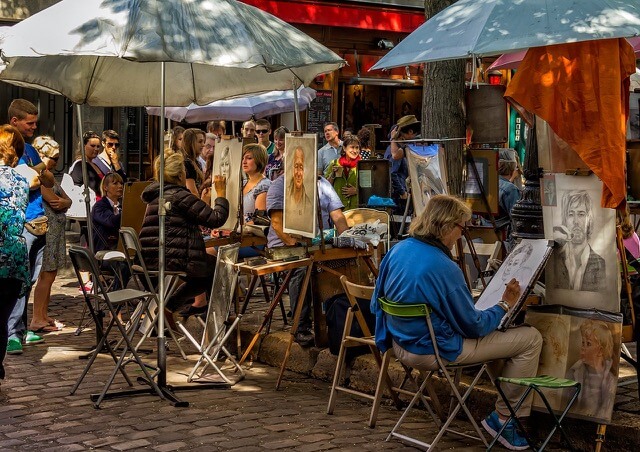
Artist's Rive Gauche in Paris
The Artist's Rive Gauche is a popular area in Paris, known for its vibrant art scene and unique atmosphere.
For centuries, France has produced some of the world’s most influential and finest artists, writers, and philosophers, including famous names such as Claude Monet, Victor Hugo, Alexandre Dumas, Cézanne, Renoir and Jean-Paul Sartre.
Famous Writers
France's literary landscape features celebrated authors like Victor Hugo, known for Les Misérables and The Hunchback of Notre Dame, who blended social justice with poetic depth. Gustave Flaubert's Madame Bovary highlights his meticulous style, while Marcel Proust's In Search of Lost Time explores memory. Émile Zola, a leader in the naturalist movement, is recognised for his gritty realism in Germinal. Alexandre Dumas captivated readers with The Three Musketeers and The Count of Monte Cristo.
In the 20th century, Jean-Paul Sartre and Albert Camus became influential figures with works like The Stranger and The Plague. Colette's Gigi and Claudine showcase her sensual prose and strong female characters, further impacting French literature.
Famous Painters
The art world owes much to French painters who have transformed various artistic movements. Claude Monet, a master of Impressionism, is known for his "Water Lilies" series." Édouard Manet's bold pieces, like "Olympia," paved the way for modern painting. Pierre-Auguste Renoir's joyful portraits, such as "Dance at Le Moulin de la Galette," celebrate everyday life. Paul Cézanne’s geometric forms in "The Card Players" significantly impacted modern art. Henri Matisse is famous for his vibrant colours in "The Dance" and "The Red Room." Meanwhile, Marc Chagall combines folklore and surrealism, and Jean Dubuffet's unconventional works define the art brut movement.
Famous Philosophers
Influential philosophers have shaped France's intellectual heritage. René Descartes, the father of modern philosophy, stated, "Cogito, ergo sum" ("I think, therefore I am"), laying the groundwork for rationalism. Voltaire critiqued religious dogma and political oppression in Candide, impacting Enlightenment thought. Jean-Jacques Rousseau's The Social Contract influenced revolutionary ideas, while Montesquieu emphasised the separation of powers in The Spirit of the Laws. Simone de Beauvoir's The Second Sex is a key text in feminist theory, and Michel Foucault reshaped our understanding of power and social institutions.
Music and Festivals
The country’s music ranges from classical to contemporary pop, featuring influential artists such as Claude Debussy, Édith Piaf, Serge Gainsbourg, Jean-Michel Jarre and more recently Daft Punk. Major music festivals, like Jazz à Vienne, Printemps de Bourges and Les Vieilles Charrues, showcase emerging talent. La Fête de la Musique, started by François Mitterands' culture minister Jack Lang, held on the summer solstice, is a nationwide celebration of music where amateur and professional musicians of all ages and genres perform in public spaces everywhere in the country.
Innovative Cinema and Classic Films
The film industry is another dynamic sector, producing around 300 feature films annually. French cinema is recognised for its innovation, particularly through the French New Wave of the 1950s and 1960s, led by directors like François Truffaut and Jean-Luc Godard. The Cannes Film Festival continues to celebrate global cinema, while modern filmmakers such as Luc Besson and Jacques Audiard contribute to the country's cinematic tradition.
The Legacy of French Theatre
Theatre in France dates to the Middle Ages, with figures like Molière and Racine marking its golden age. Today, renowned institutions such as the Comédie-Française and the Avignon Festival highlight classical and contemporary works, attracting international audiences. France’s performing arts reflect the nation’s cultural heritage and ongoing creative evolution.
Festivals and Events
Visitors and locals can enjoy various celebrations and events that showcase the best of French culture throughout the year.
La Fête Nationale – Bastille Day

Patrouille de France on Bastille Day
One of the most iconic national events is Bastille Day, celebrated on July 14th. This day commemorates the storming of the Bastille in 1789 and the start of the French Revolution. Festivities include grand fireworks displays, military parades, and community gatherings, making it a highlight of the national calendar.
Colourful Events by the Sea
Unique and colourful festivals like La Fête du Citron in Menton celebrate the humble lemon with elaborate citrus sculptures and parades, transforming the town into a vibrant spectacle each February. Staying on the glamourous Riviera, the Cannes Film Festival, held every year in May, is a prestigious event that attracts film industry professionals, celebrities, and movie enthusiasts from around the planet. It serves as a platform for showcasing new films and honouring cinematic achievements.
The Biggest Music Festivals
Music lovers have plenty to enjoy, with festivals like Jazz à Vienne, which takes place in the picturesque town of Vienne each summer and features performances by renowned jazz musicians. The Jazz à Juan festival in Antibes is also a must-visit for jazz enthusiasts, offering a lineup of world-class artists in a stunning seaside setting.
The Vieilles Charrues festival in Brittany is one of the largest music festivals in France, presenting a diverse range of international and local artists. In contrast, the Festival Interceltique de Lorient celebrates music, dance, theatre, and food from the Celtic world. It has become one of France's major summer festivals, attracting over 700,000 visitors and performers from various European Celtic regions.
A Must-See for Theatre Lovers
For those interested in cultural and historical events, the Festival d'Avignon is a must-visit. Held in the medieval city of Avignon, this annual theatre festival presents a wide range of performances, from classical plays to contemporary productions, drawing theatre enthusiasts from around the globe.
Foodie and Wines Events Galore
France is, of course, famous for its wine and gastronomy festivals. The Fête de la Gastronomie, held in September, celebrates the country's culinary heritage with events and tastings across various regions. Wine festivals like the Fête des Vendanges in Montmartre allow visitors to sample local wines and enjoy traditional French cuisine. Christmas markets, or Marchés de Noël, are a beloved tradition, offering visitors the chance to shop for seasonal gifts, sample local delicacies and enjoy festive entertainment.
Classic Sport Events
Sports enthusiasts can enjoy high-octane events like the 24 Hours of Le Mans, one of the world's oldest and most prestigious endurance car races. The Tour de France attracts millions of spectators and showcases the country's diverse landscapes, from the Alps to the Pyrénées and the Champs-Élysées.
Sports in France
France has a rich sports culture known for its excellence across many disciplines. The country has hosted prestigious events and won over 700 Olympic medals, including 216 gold medals, highlighting its commitment to athletic success.
Recent Milestones: Olympic and Paralympic Games
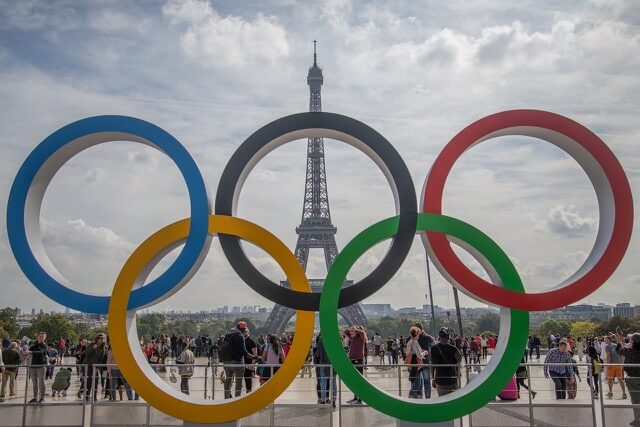
The Olympic Games in Paris
Paris recently held the Olympic and Paralympic Games in the summer of 2024, emphasising sustainability and innovation. During this once-in-a-century event, France secured 16 gold and 64 medals, showcasing its cultural heritage and outstanding athletic performances. France is now preparing for the Winter Olympic Games in 2030, promising to be another spectacular sports event.
Football and Rugby
Football is one of the most popular sports in France, if not the most popular. The national team, Les Bleus, has won the coveted FIFA World Cup twice (1998 and 2018) and the UEFA European Championship twice (1984 and 2000). The country has over 1,500 professional football clubs, including top teams like Paris Saint-Germain (PSG) and Olympique de Marseille in Ligue 1. Rugby is also hugely important, with the national team competing in the Six Nations Championship and a strong domestic league, Top 14, among over 1,000 rugby clubs.
Iconic Sports Events
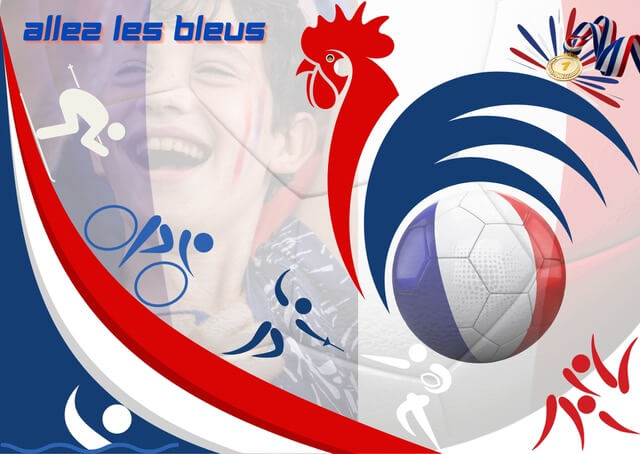
Allez les Bleus
Cycling in France is epitomised by the Tour de France, a challenging 3,500-kilometre race that showcases the country's diverse landscapes and attracts millions of viewers and participants each year. Tennis fans eagerly anticipate the French Open, one of the Grand Slam tournaments held at Roland-Garros in Paris.
From Le Mans to Pétanque
Other notable sporting events include the 24 Hours Race in Le Mans, a prestigious endurance car race, and the French Grand Prix in Formula One, held at the Paul Ricard circuit in the country's south. France excels in various other sports, including judo, kayaking, basketball, motor racing and fencing. The national sport of pétanque is a beloved pastime enjoyed by people of all ages. Additionally, France features around 700 golf courses, providing numerous options for golf enthusiasts.
A Commitment to Athletic Excellence
The World Association of Sporting Events (WAES) has recognised France as the second most sporting nation in the world, demonstrating its commitment to excellence across a wide range of sports. Its dedication to promoting athletics at all levels fosters a vibrant culture that inspires participants and spectators.
Art and Architecture

Chambord Castle in the Loire Valley
France's artistic and architectural heritage is unparalleled, reflecting centuries of innovation and cultural expression. The country offers a breathtaking journey through time, from past masterpieces to contemporary marvels.
Historic Masterpieces
The Louvre Museum in Paris is the world's largest and most visited art museum, hosting thousands of artworks, including the Mona Lisa and the Winged Victory of Samothrace. The Palace of Versailles, with 2500 rooms, its lavish halls and gardens, epitomises French Baroque architecture and the grandeur and influence of the French court and its courtisans.
Medieval Marvels
Notre-Dame Cathedral and Chartres Cathedral are remarkable examples of French Gothic architecture. Their sharp-looking, soaring structures, intricate stained-glass windows and elaborate sculptures showcase the skill and devotion of medieval craftsmen.
Renaissance and Classical Elegance
The Château de Chambord in the Loire Valley exemplifies French Renaissance architecture with ornate façades and a double-spiral staircase. The Panthéon in Paris was modelled after the ancient Roman Panthéon, and serves as a mausoleum for France's illustrious figures, including Voltaire and Victor Hugo.
Modern and Contemporary Innovations
Among the country’s 1200 museums, the Centre Pompidou and the Musée d'Orsay in Paris are hubs for modern and contemporary art. The Centre Pompidou houses works by Picasso, Matisse and Van Gogh, but it is closed to visitors while the structure and the buildings are being modernised. The Musée d'Orsay features Impressionist and Post-Impressionist masterpieces by Monet, Degas and Cézanne.
Contemporary Art Scene
France's contemporary art scene is vibrant, with galleries, art fairs and public installations. The Fondation Louis Vuitton and the Palais de Tokyo in Paris are prominent venues for innovative exhibitions. Street art has also gained prominence, with artists like Banksy and Invader transforming urban spaces into contemporary street canvases.
Architectural Innovations
France continues to push architectural boundaries. The Institut du Monde Arabe, designed by Jean Nouvel, and the Cité de la Mode et du Design showcase moderniste and innovative designs. The annual Nuit Blanche event in Paris celebrates contemporary art and culture with installations and performances throughout the city.
The Cité du Vin is a striking building celebrating wine in Bordeaux. It features a unique glass facade miming the movement of wine. Opened in 2016, it serves as a cultural centre and wine museum. In Paris, the upcoming Newlink Tower will reach 220 meters and combine sleek glass design with sustainable features.
Preserving Cultural Heritage
In 2022, France boasted an impressive 45,648 protected historic monuments, including buildings meticulously preserved for their historical and architectural significance. Of these, 30,840 are registered, and 14,808 are classified, highlighting their importance and value. Among these treasures, two châteaux stand out as the oldest and most venerable: the Château de Langeais and the Château de Thil.
French Facts, Stats and Infographics
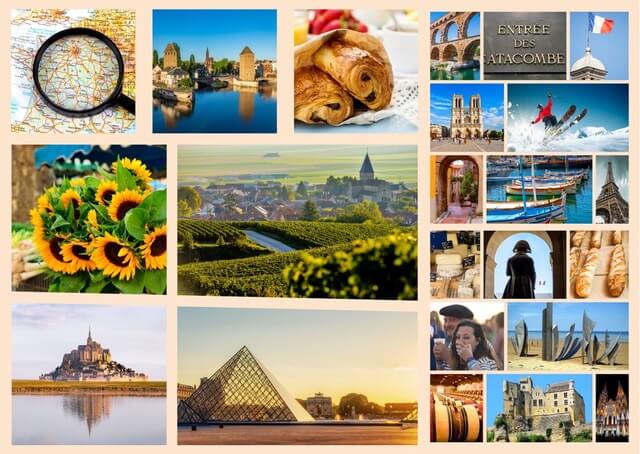
To explore more visual details and statistics, check out our comprehensive infographic with over fifty facts and statistics, offering a snapshot of what makes France extraordinary. If you are motivated to learn more, we invite you to discover even more interesting and quirky facts about the country. We've listed well over a hundred fascinating facts, we couldn’t fit more on this page!
Welcome to France!
France offers something for everyone, from its beautiful natural and varied landscapes to its incredible cultural heritage and thriving economy. Whether you're a food enthusiast, a history buff, a passionate photographer or an adventure seeker, France has it all. What are you waiting for? Pack your suitcase and get ready to explore this remarkable country. You won’t regret it.
© Copyright my-french-house.com™ Ltd, all rights reserved. This article, the infographic and the images may not be published, broadcasted, rewritten, or redistributed, partly or entirely, without written permission. Contact us for information about sponsoring this page.




